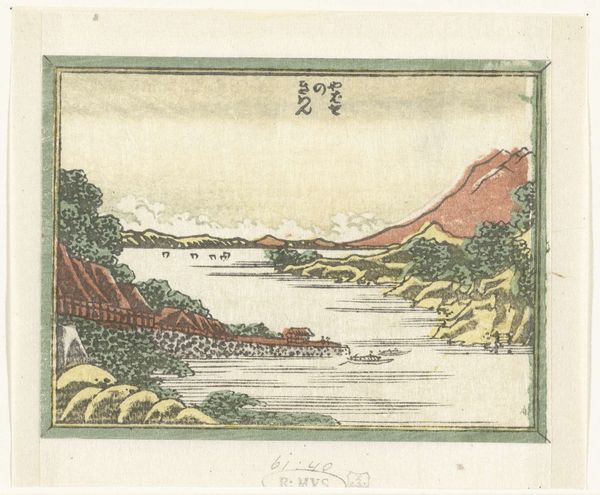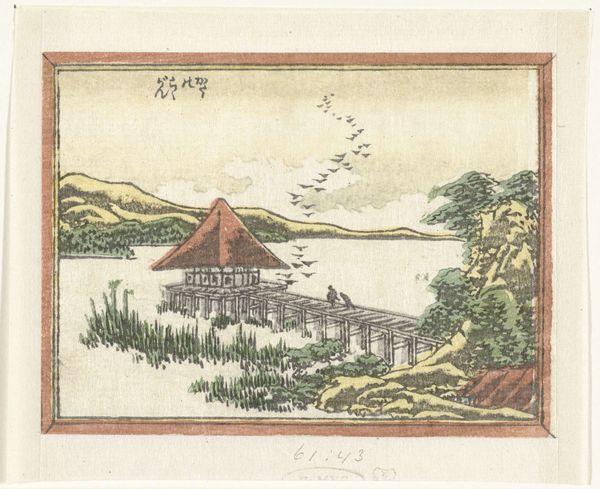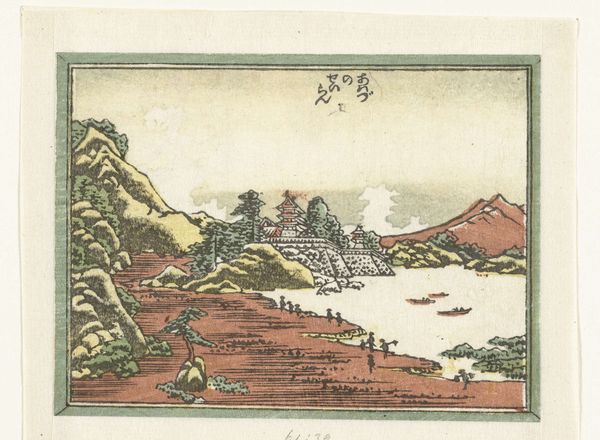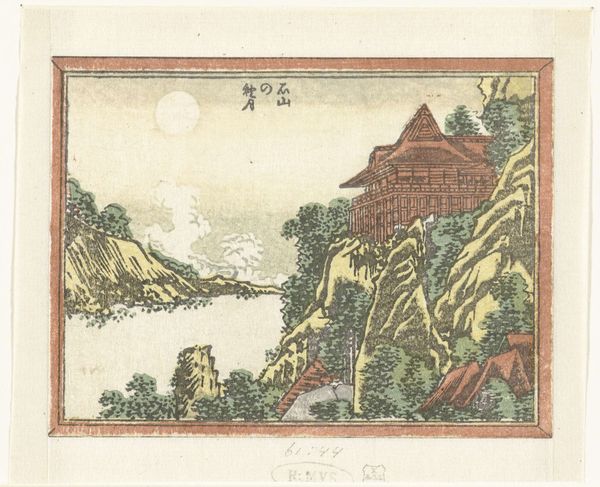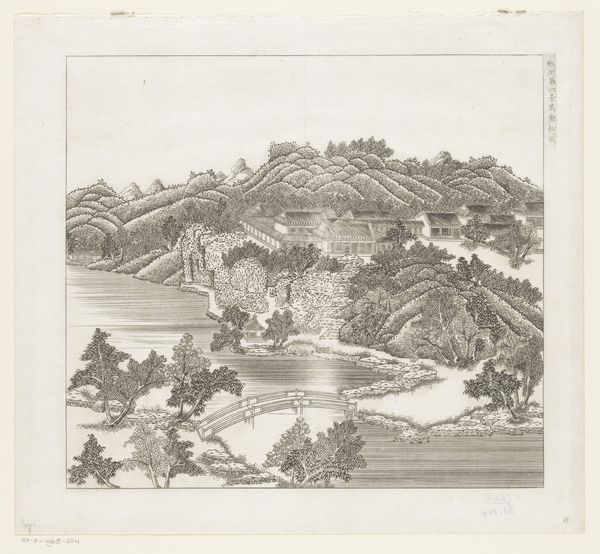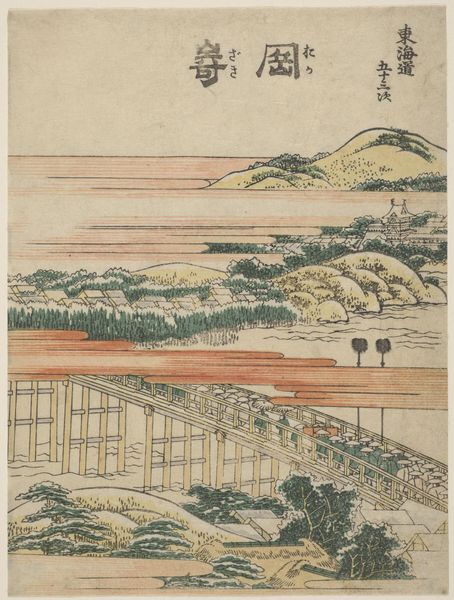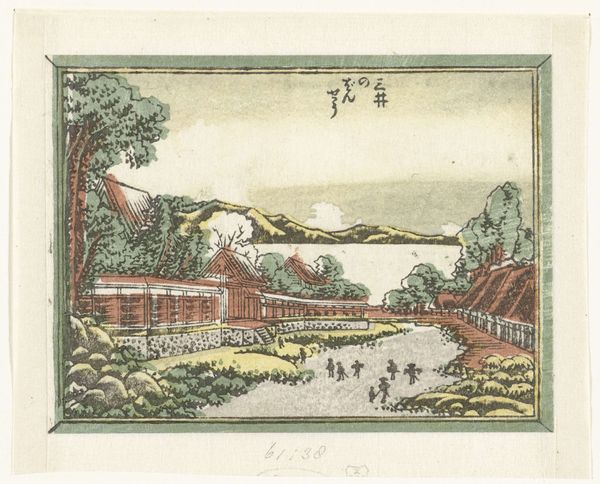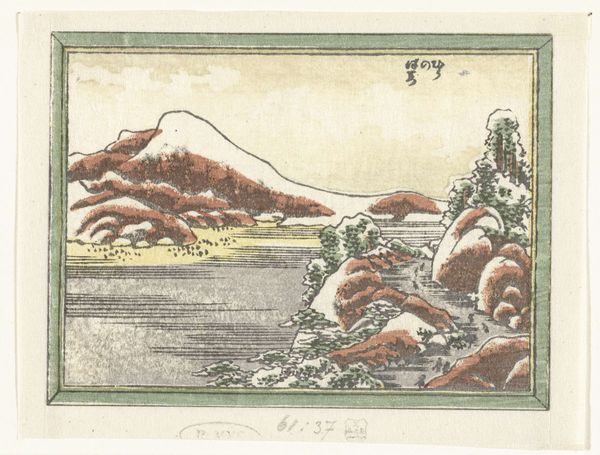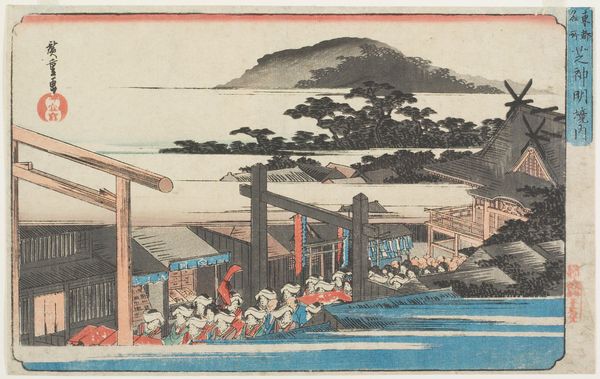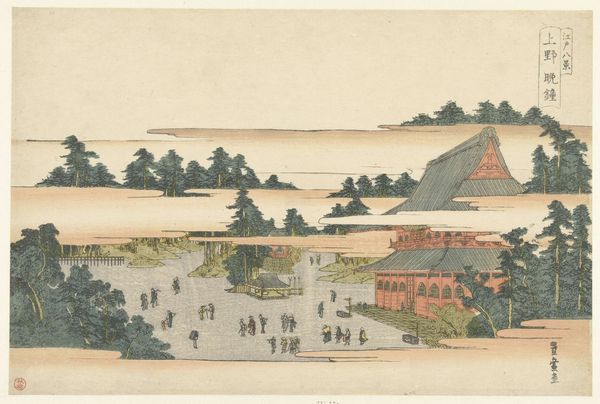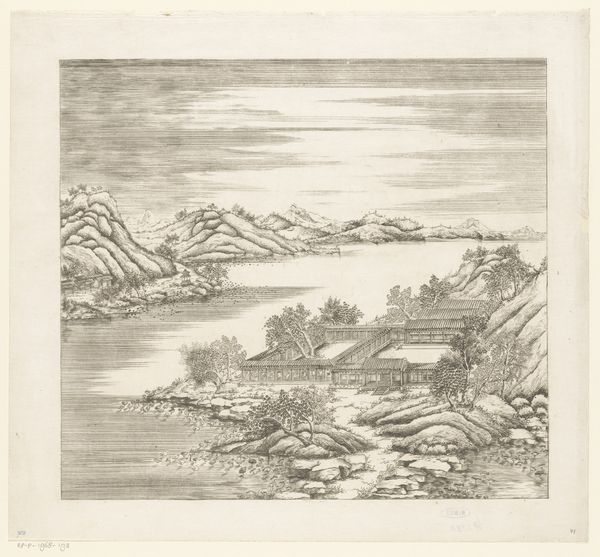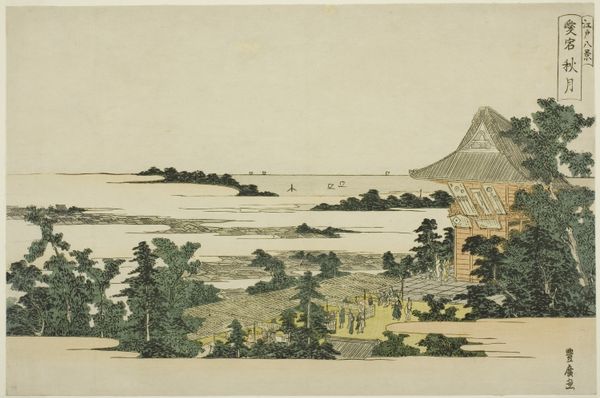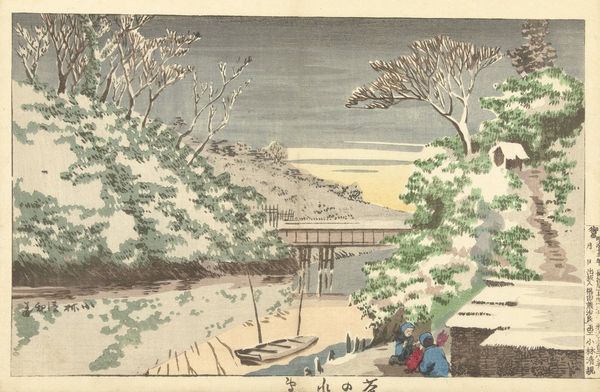
print, woodblock-print
# print
#
asian-art
#
landscape
#
ukiyo-e
#
woodblock-print
#
mountain
#
orientalism
Dimensions: height 82 mm, width 111 mm
Copyright: Rijks Museum: Open Domain
Editor: Here we have Hokusai’s "Evening Glow at Seta," a woodblock print from around 1809-1814. The bridge stretching across the water really draws the eye. What can you tell me about this piece? Curator: Hokusai's work, specifically his woodblock prints, pushes against the traditional hierarchy by elevating the status of printmaking, traditionally considered a craft, to fine art. We see in “Evening Glow at Seta” an interesting negotiation with materials. Editor: How so? Curator: Woodblock printing necessitates collaboration. There are the artisans carving the blocks, the ones applying the colors, and the printers, all under Hokusai's direction, of course. Consider how the labor is divided and what materials - ink, wood, paper - are readily available for mass production, catering to the popular desire for images of familiar landscapes. Does this commodification enhance or detract from the perceived artistic value, in your view? Editor: I see what you mean. It makes you think about who it was really “for” and how many hands contributed. So, not just an artistic statement, but almost a product. It wasn’t just him working alone in a studio creating "high art". Curator: Precisely. Moreover, thinking about the location itself is crucial. Seta, being a rest stop on the Tokaido road, held importance as both a site of commerce and consumption. The print becomes a portable souvenir, tied intrinsically to the journey and the expanding merchant class, shifting away from elite patronage towards something much broader. Editor: That’s a perspective I never considered. Thinking about the socio-economic aspect and the process reveals so much more about its place and time! Thanks. Curator: Exactly! This Materialist approach allows us to think deeply about how artwork production is tied into historical moments.
Comments
No comments
Be the first to comment and join the conversation on the ultimate creative platform.
